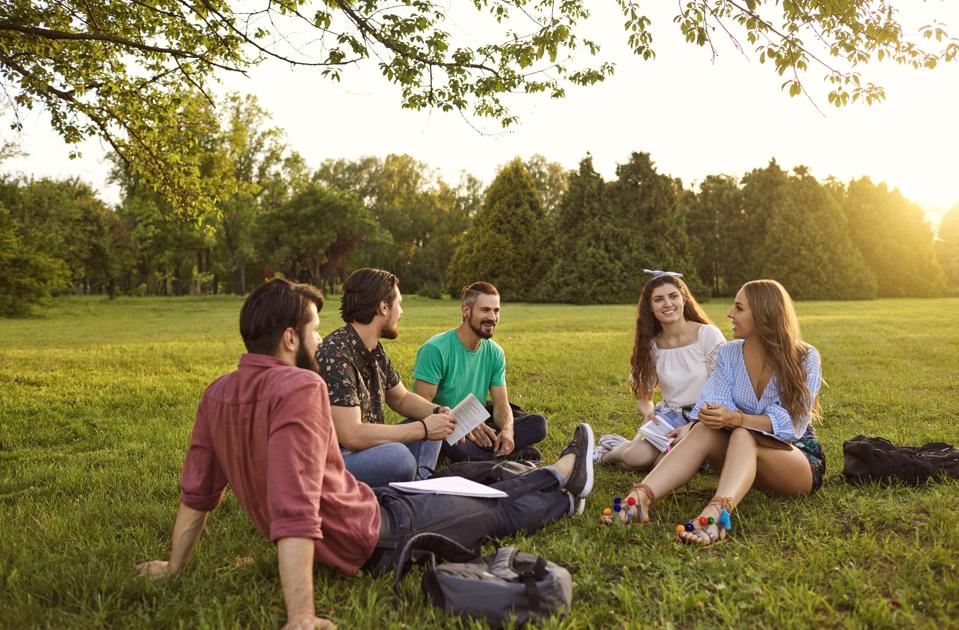According to a 2024 report by Inside Higer Ed, a sense of belonging is a key factor in student retention. A 2025 report on Forbes.com also suggested that a sense of community is a potent source of health and well-being for many students. Because of such findings, many colleges and universities invest in ways to enhance a sense of community and belonging on campus.
There are perceived barriers to establishing a sense of belonging and community on campus. As explained in another 2025 report on Forbes.com, DEI bans often prevent public schools from reaching out to specific communities of students, and these bans even limit mental health professionals. Furthermore, the size of some campuses mirrors the sizes of cities, making community building appear to be a difficult task.
However, research on collective effervescence suggests that promoting belonging among students does not require an extraordinary community building event, or a shared relationship history, and might even occur while interacting with strangers. Dr. Shira Gabriel is a Professor of Psychology at The State University of New York at Buffalo and the past-president of the Midwestern Psychological Association. She has authored numerous publications on the concept of collective effervescence and is currently writing a book on this topic.
According to Gabriel, “Collective effervescence is the psychological experience that we sometimes have when we are in a crowd of people — often a crowd with strangers. For example, people often report it at concerts, or protests, or sporting events.” A 2022 report by Frontiers in Psychology states that the term collective effervescence was coined by Emile Durkheim and refers to the shared emotional experience and sense of connection that individuals feel when they participate in a collective activity.
Why Is Collective Effervescence Important?
Gabriel stated, “We have done a lot of research on this and found that there are two things that happen that define collective effervescence. The first is that we feel a sense of connection to other people. We don’t think these strangers next to us at a concert are going to become our best friends. This isn’t the kind of connection we feel with close friends and family and romantic partners. Instead, they remind us that we are socially embedded. They remind us that we have a place in our society and that is a primal and important human need.”
In 2020, Gabriel co-authored an article in the Journal of Positive Psychology, which argued that there’s an enhanced survival value of a collective life, resulting in people having internal mechanisms that naturally propel them into collectives. These mechanisms allow people to assimilate quickly to groups and to experience pleasure, increase life satisfaction, and positive emotions from a collective, even without a shared relational history.
The researcher continued, “The second component of collective effervescence is a feeling that something sacred is happening. We feel like the moment transcends the ordinary day-by-day and is special. We may feel connected to something bigger than ourselves. We may lose our sense of time passing. And that is another human need — we want life to have meaning. We want it to feel special. Collective effervescence gives us that.”
What Are Possible Mental Health Benefits Of Collective Effervescence?
Gabriel explained the possible mental health benefits for collective effervescence. “We are finding that collective effervescence increases the feeling that our lives have meaning. It increases our feeling that we are thriving. It increases happiness. And it increases satisfaction with our lives. Some very new work in our lab suggests that a powerful collective effervescence experience can increase wellbeing for at least six months!”
These benefits are consistent with a 2025 report by The New York Times, arguing that there is a significant association between feeling connected with others and happiness. According to this report, even fleeting social interactions can improve happiness. Thus, it’s apparent that higher education has the potential to be a natural source of collective effervescence for many students, which could provide a sense of meaning and happiness.
How can colleges and universities promote collective effervescence among students?
Gabriel’s work suggests that schools don’t need to spend a lot of money to promote belonging through collective effervescence. She said, “You don’t need to feel connected to the group beforehand. For example, some people feel it waiting in line or in an elevator. But there is a feeling that the group is not just strangers but instead community members or fellow members of society…”
Most schools utilize mascots and messaging to symbolize how students are fellow members of a campus community. Gabriel gave other examples of how schools can promote collective effervescence on campus. “Having events that students can attend may increase collective effervescence. Even small things like having students chat with one another before class starts.” The researcher also stated, “It might help to encourage people to find collective events that work for them. Think about their interests and attend events related to those. Because this is a primitive need, people often don’t realize that they have it and thus don’t do things to fill it.”
Not only do many people not realize their need for collective effervescence, but it also appears that many people don’t realize or acknowledge that higher education can be a key source of collective effervescence for many emerging adults.

